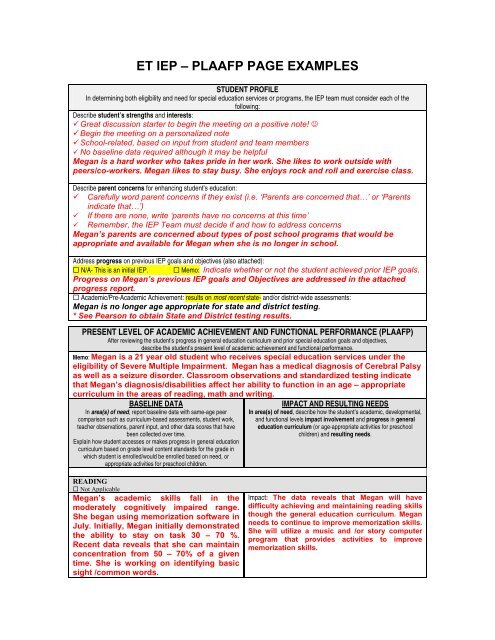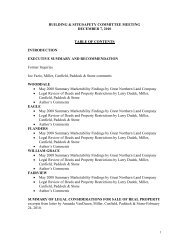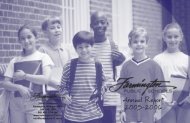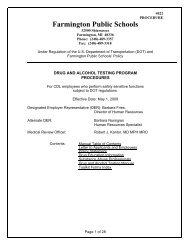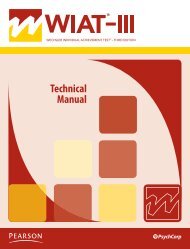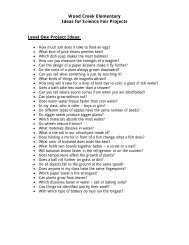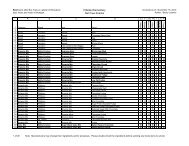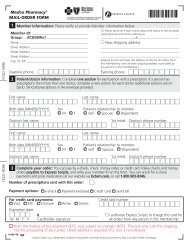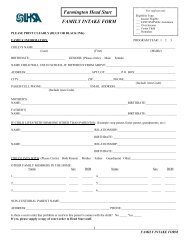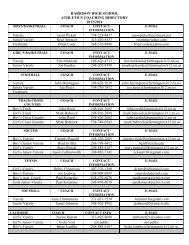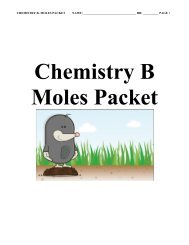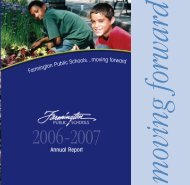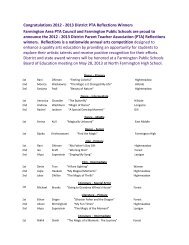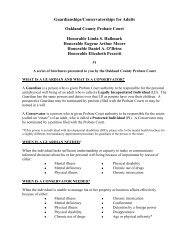ET PLAAFP SXI.pdf
ET PLAAFP SXI.pdf
ET PLAAFP SXI.pdf
Create successful ePaper yourself
Turn your PDF publications into a flip-book with our unique Google optimized e-Paper software.
<strong>ET</strong> IEP – <strong>PLAAFP</strong> PAGE EXAMPLESSTUDENT PROFILEIn determining both eligibility and need for special education services or programs, the IEP team must consider each of thefollowing:Describe student’s strengths and interests: Great discussion starter to begin the meeting on a positive note! ☺ Begin the meeting on a personalized note School-related, based on input from student and team members No baseline data required although it may be helpfulMegan is a hard worker who takes pride in her work. She likes to work outside withpeers/co-workers. Megan likes to stay busy. She enjoys rock and roll and exercise class.Describe parent concerns for enhancing student’s education: Carefully word parent concerns if they exist (i.e. ‘Parents are concerned that…’ or ‘Parentsindicate that…’) If there are none, write ‘parents have no concerns at this time’ Remember, the IEP Team must decide if and how to address concernsMegan’s parents are concerned about types of post school programs that would beappropriate and available for Megan when she is no longer in school.Address progress on previous IEP goals and objectives (also attached): N/A- This is an initial IEP. Memo: Indicate whether or not the student achieved prior IEP goals.Progress on Megan’s previous IEP goals and Objectives are addressed in the attachedprogress report. Academic/Pre-Academic Achievement: results on most recent state- and/or district-wide assessments:Megan is no longer age appropriate for state and district testing.* See Pearson to obtain State and District testing results.PRESENT LEVEL OF ACADEMIC ACHIEVEMENT AND FUNCTIONAL PERFORMANCE (<strong>PLAAFP</strong>)After reviewing the student’s progress in general education curriculum and prior special education goals and objectives,describe the student’s present level of academic achievement and functional performance.Memo: Megan is a 21 year old student who receives special education services under theeligibility of Severe Multiple Impairment. Megan has a medical diagnosis of Cerebral Palsyas well as a seizure disorder. Classroom observations and standardized testing indicatethat Megan’s diagnosis/disabilities affect her ability to function in an age – appropriatecurriculum in the areas of reading, math and writing.BASELINE DATAIn area(s) of need, report baseline data with same-age peercomparison such as curriculum-based assessments, student work,teacher observations, parent input, and other data scores that havebeen collected over time.Explain how student accesses or makes progress in general educationcurriculum based on grade level content standards for the grade inwhich student is enrolled/would be enrolled based on need, orappropriate activities for preschool children.IMPACT AND RESULTING NEEDSIn area(s) of need, describe how the student’s academic, developmental,and functional levels impact involvement and progress in generaleducation curriculum (or age-appropriate activities for preschoolchildren) and resulting needs.READING Not ApplicableMegan’s academic skills fall in themoderately cognitively impaired range.She began using memorization software inJuly. Initially, Megan initially demonstratedthe ability to stay on task 30 – 70 %.Recent data reveals that she can maintainconcentration from 50 – 70% of a giventime. She is working on identifying basicsight /common words.Impact: The data reveals that Megan will havedifficulty achieving and maintaining reading skillsthough the general education curriculum. Meganneeds to continue to improve memorization skills.She will utilize a music and /or story computerprogram that provides activities to improvememorization skills.
Megan uses verbal speech but isfrequently difficult to understand. Sheinconsistently responds to the “wh”questions. Megan averages 68% accuracy.She is able to maintain conversationwithout prompts with 64% accuracy.Same age peers in general educationwould be able to initiate and maintainconversations in academic and socialsettings.Language needs for students with limited English proficiency wereconsidered. Other Communication/Language Needs:Megan’s expressive language impedes herability to fluently and accuratelycommunicate in a general education setting/curriculum as well as in socialsettings/interactions.The data reveals that Megan needs tomaintain conversations expressing 3 – 4social exchanges without cues. She alsoneeds to respond appropriately to “wh”questions.SOCIO-EMOTIONAL/BEHAVIORALBehavior that impedes student’s learning or the learning of others, positive behavioral supports, strategies, etc.X Considered, but NOT applicable Positive behavior interventions, supports, and other strategies forbehaviors impeding learning were considered.Impact:Resulting Needs:PERCEPTION/MOTOR/MOBILITYGross and fine motor coordination, balance, and limb/body mobility. Considered, but NOT applicableMegan has limited range of motion in herupper extremities. She has better use ofher left hand for fine motor andprevocational activities and uses her righthand as an assist. She is able to feedherself with her right hand. Megan requiresassistance with all activities of daily livingincluding dressing, hygiene and mealpreparation and set up.Same age peers without Cerebral Palsy areindependent with most ADL’s.Impact: Megan’s physical disabilities needsimpact her ability to be independent inmobility and adult living skills. Cognitive aswell as physical limitations impede herability to compete academically in a generaleducation environment as well asparticipation in the curriculum.Perception/Motor/Mobility Needs:Megan’s Transition Plan/ Life Vision isdriving the needs of her IEP. Megan needs toimprove her ability to assemble,disassemble, sort and package. She alsoneeds to perform fine motor tasks thatrequire bilateral activities, oinker grasp ortripod grasp in order to improve andmaintain work related skills and adult livingskills.ADAPTIVE/INDEPENDENT LIVING SKILLSSkills for academic success and independent living (where appropriate). Considered, but NOT applicableSee Perception Motor Mobility (above) Independence Level: Full Functional Supported ParticipationImpact:Resulting Needs:MEDICALHealth, vision, hearing, or other physical/medical issues. Considered, but NOT applicable Language/communication needs for student who is deaf/hard ofhearing were considered. Braille instruction for student who isvisually impaired/blind was considered. Other medical needs:Impact:Resulting Needs:ASSISTIVE TECHNOLOGY (if previously assigned)If previously assigned, indicate low-/high-tech supports, devices, etc.
Considered, but NOT applicable AT devices and service needs were considered (see alsoSupplemental Aids).Impact:Resulting Needs:


